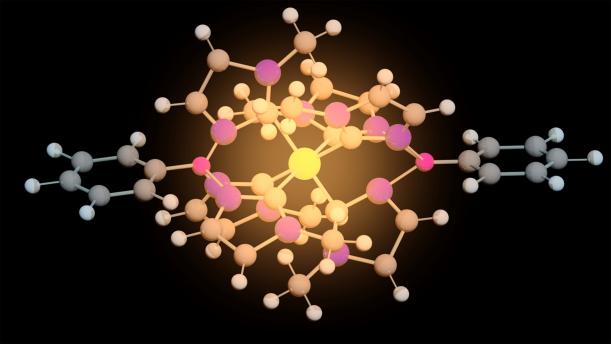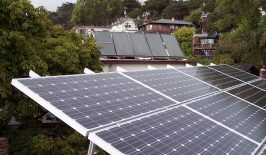The solar sector itself is not without environmental impact – especially in relation to rare-earth minerals. However, could humble old iron be about to change that?
For solar panels to be effective, they currently require certain minerals that possess the ability to efficiently transfer the solar energy of the sun into the electricity-generating components of the panel. Often this is the job of so-called rare-earth minerals, a division of seventeen metals and minerals, including yttrium, Europeum and neodymium, which are in high demand in the technological industries – including the solar sector.
Researchers at Sweden’s Lund University, however, are uncovering ways to turn one of Earth’s least rare elements – iron – into something akin to a rare-earth metal, potentially revolutionizing the solar panels of the future and drastically dropping their price.
New Iron Age?

The Lund researchers were able to produce a new iron-based molecule which does away with the venerable minerals previous handicaps, such as a poor electron tranfer rate and complete lack of photoluminescence. Their new molecule, dubbed Fe(phtmeimb)2, is able to trap the energy of solar light for long enough for it to react with another molecule, passing it along. It also has the ability to emit photoluminescent light that researchers were able to observe with the naked eye at room temperature. Both of these alterations means iron could potentially perform the functions of rare-earth metals in the solar panels of the future. Kenneth Wärnmark, professor of chemistry at Lund University stated:
“Our results now show that by using advanced molecule design, it is possible to replace the rare metals with iron, which is common in the Earth’s crust and therefore cheap”.
Making up around six percent of the Earth’s crust, iron is the second most common metal – after aluminium – and is already used to make a huge range of products, in particular steel. This abundance and degree of exploitation could drastically reduce the cost of solar panels and other fuel systems – although not entirely without environmental impact.
Rare-earth metals, on the other hand, are much harder to locate and have spawned a global rare-earth rush as nations and corporations scramble to find the next reliable source. China, in particular, claims to produce around ninety percent of the world’s rare-earths, despite only being home to around twenty percent of rare-earth deposits.
This is partly due to a massive expansion of mining and smelting operations in areas such as Ganzhou from the early 2000s. This comes with major environmental impacts, especially due to the toxic nature of some rare-earth metals and the speed in which mines have been established. Water sources have been contaminated, affecting agriculture, while mines are regularly abandoned once the metals dry up, leaving around a hundred square kilometers of devastated landscape and 190 million tonnes of mining waste. Furthermore, rare-earth metals are notoriously hard to recycle.
Additionally, the demand for rare-earth minerals has also spawned an illegal black market for the elements, often in conflict zones, with some sources claiming illegal mining is larger than the legal market. In these situations, environmental damage is even more acute, while workers are also exploited for their labour in dangerous working conditions.
Iron, of course, is not completely devoid of these environmental concerns, but its abundance and the regulated nature of its extraction could at least slow down the breakneck speed for rare-earth metal exploitation. Additionally, iron-based solar panels could be much cheaper than their rare-earth counterparts, opening up the solar market to a much wider range of customers.





